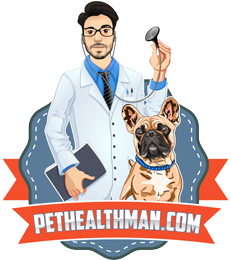Contact allergies in dogs occur when their skin comes into direct contact with certain substances that trigger an allergic reaction. These substances, known as allergens, can include chemicals, plants, fabrics, or grooming products. In this article, we will provide insights into common dog contact allergies, discuss their diagnosis, and highlight effective treatment options to help alleviate the discomfort and improve the well-being of our four-legged friends.
Understanding Contact Allergies in Dogs: Contact allergies, also referred to as contact dermatitis, develop when a dog’s skin reacts unfavorably to specific substances. Common allergens in contact allergies can include certain types of fabric, cleaning products, pesticides, plants (e.g., poison ivy), and even some grooming products. When a dog with a contact allergy comes into direct contact with these allergens, it triggers an immune response, resulting in symptoms such as redness, itching, swelling, and skin lesions.
Diagnosing Contact Allergies: Diagnosing contact allergies in dogs can be challenging as the symptoms may resemble other skin conditions. As a veterinarian, I follow a systematic approach to help identify contact allergies in dogs:
- Detailed History and Physical Examination: Gathering a comprehensive history from the dog owner is crucial. Information about recent changes in the dog’s environment, exposure to potential allergens, and the onset of symptoms can provide important clues. A thorough physical examination helps identify the specific areas of the dog’s skin that are affected.
- Allergen Identification: Identifying the specific allergen causing the contact allergy can be challenging. If a particular substance is suspected, a patch test or skin scraping may be performed to confirm the allergen. In some cases, a referral to a veterinary dermatologist for intradermal skin testing may be necessary.
- Elimination Diet: In cases where food allergies are suspected alongside contact allergies, an elimination diet can help determine if the dog has concurrent food allergies. By removing potential allergenic ingredients from the dog’s diet and reintroducing them systematically, any food-related reactions can be identified.
Treatment Options for Contact Allergies: The treatment of contact allergies in dogs involves two main approaches: avoidance of the allergen and symptomatic relief. Here are some common treatment options:
- Allergen Avoidance:
- Identify and Eliminate the Allergen: Once the specific allergen is identified, it is essential to eliminate the dog’s exposure to that substance. This may involve avoiding specific plants, changing cleaning products or grooming supplies, and using hypoallergenic bedding or fabrics.
- Protective Measures: In cases where complete avoidance is not possible, protective measures can be employed. This includes using dog boots or protective clothing to minimize contact between the allergen and the dog’s skin.
- Symptomatic Relief:
- Topical Treatments: Topical treatments such as soothing shampoos, sprays, or ointments can help alleviate itching, redness, and inflammation associated with contact allergies. Your veterinarian can recommend suitable products based on the dog’s condition.
- Medications: In more severe cases, medications such as oral antihistamines or corticosteroids may be prescribed to manage itching, swelling, and discomfort. These medications should be used under veterinary guidance and for the prescribed duration to avoid potential side effects.
- Environmental Management:
- Regular Bathing: Regular bathing with hypoallergenic or medicated shampoos can help remove allergens from the dog’s skin and provide relief.
- Cleaning Routine: Maintaining a clean living environment is important to minimize the dog’s exposure to potential allergens. Regularly cleaning floors, bedding, and furniture can help reduce the presence of allergens.
Contact allergies can cause significant discomfort for dogs, but with proper diagnosis and management, affected dogs can find relief. We emphasize the importance of identifying and avoiding the specific allergen that triggers the contact allergy. Additionally, providing symptomatic relief through topical treatments and medications can help alleviate itching and inflammation. By implementing environmental management practices and working closely with your veterinarian, you can effectively manage contact allergies in dogs and improve their overall well-being.










